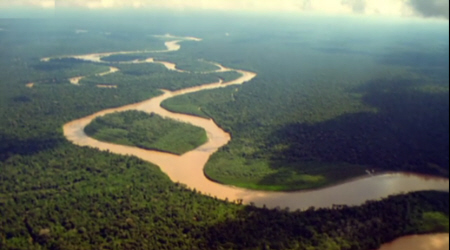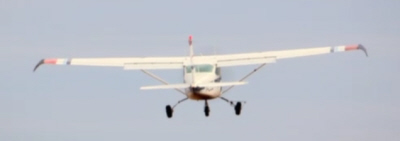The Amazon Rainforest
Where the tropical climate cell begins
The Amazon basin, 5.5 million square kilometres of rainforest stretching across Ecuador and into Brazil. This is the heart of the first climate zone, the green band that centred on the equator. With all that heat concentrated at the equator, you wouldn't necessarily expect it to be so wet and lush, yet the majority of the world's rainforests are found in the equatorial region.
There's about 2,000 species of tree here and it's dark in amongst the trees, and that's because the very intense equatorial sunlight doesn't really penetrate through the thick canopy of leaves. The reason the heat of the equator creates this dense forest also explains why this region is the engine of the global climate system. To see how it works, I need to get above the canopy. The morning mists are a breathtaking sight, but the movement of air also shows an important atmospheric process in action.
If you remember from your physics lessons, hot air rises, as we can see it doing beautifully over the trees here. And as it rises, it cools and some of it then condenses and falls back as rain. But, some of the air keeps on rising its the start of an epic journey that will see it come under the influences of the Coriolis effect and then move on to create another huge climate band.

The Amazon Rainforest
The air rises high into the atmosphere to around 15,000 metres. This warm, rising air mass is then drawn towards the poles as it tries to equalise the temperature gradient between the heat of the equator and the cold of the poles. But, the air doesn't reach the poles. Instead it's bent to the right by the Coriolis effect.
By the time it reaches about 30 degrees north of the equator, it's moving almost parallel to the equator. But it doesn't stay here forever. The next leg of its journey will see it create a second great climate band that circles the planet.
I'm going to join that air, and travel with it as it changes direction once again.

Following the Air Currents
In the northern hemisphere the Coriolis effect is bending these winds to the right, so they're not going northwards anymore. And after a while they cool down and get more dense and that wind starts to sink. And that's happening right here.
To continue following the air she takes a parachute jump.
The ground is about 3,000 metres below me. As I fall, I'm travelling with the air that left the equator, because it too is now falling towards the ground. It is so different to the rainforest where the air came from.
She's landed in a desert.
